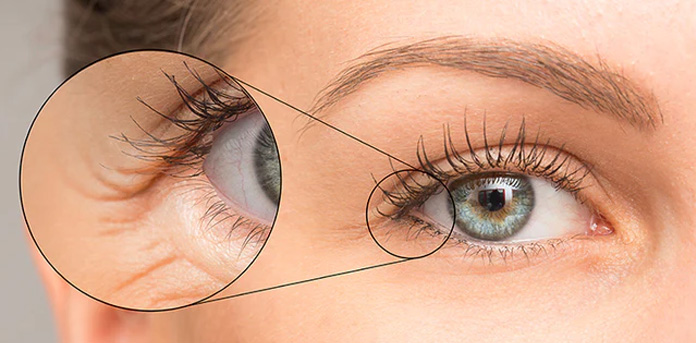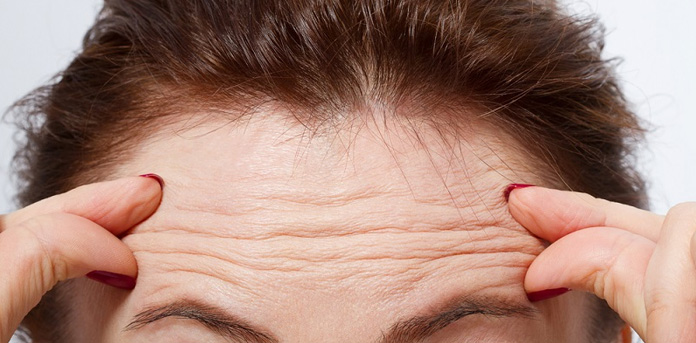Wrinkles, those fine lines and creases that appear on our skin over time, can be a visible reminder of the journey we’ve taken through life. Although they are a completely normal part of growing older, understanding their causes and exploring various treatment options can help us embrace our age gracefully and maintain healthy, radiant skin.
Let’s discuss the causes behind the formation of wrinkles and explore the available treatments, providing you with everything you need to know to make informed decisions about caring for your skin and embracing the beauty of aging gracefully.
Causes Of Wrinkles

You might think that the major cause of wrinkles is merely aging. However, there are dozens of other factors that contribute to the formation of wrinkles even at an early age.
Here are some of the major causes you need to know:
- Age: As we age, our skin naturally becomes less flexible and thinner which leads to the formation of wrinkles. With age, the production of collagen and elastin, which are vital proteins for maintaining skin firmness and flexibility, decreases.
- Sun Exposure: Prolonged and unprotected exposure to the sun’s ultraviolet (UV) rays is another primary cause of premature skin aging. UV radiation damages collagen and elastin fibers, leading to the formation of wrinkles and fine lines.
- Smoking: Smoking is known to accelerate the aging process. It delays blood flow to the skin, lowers oxygen essential and nutrient supply, and releases harmful free radicals that damage skin cells and collagen.
- Facial Expressions: some unconscious and repetitive facial movements like squinting, frowning, or smiling can cause the formation of wrinkles over time. These wrinkles become more pronounced as the skin loses its elasticity.
- Genetics: Genetic factors also play a significant role in how our skin ages. Some people may be more prone to developing wrinkles earlier in life due to their genetics
- Loss of Fat and Volume: As we age, our skin loses fat and volume which leads to sagging and the formation of wrinkles.
- Environmental Factors: Pollution, severe weather conditions, and exposure to toxins can damage the skin’s protective layer and accelerate the aging process.
Effective Treatment Options For Wrinkles
There are different effective treatment options available for wrinkles, ranging from topical solutions to more advanced medical procedures. The choice of treatment depends on the severity of the wrinkles, the individual’s skin type, and their desired results. Here are some popular and proven treatment options you can consider:
Topical Retinoids
Retinoids, derived from Vitamin A, are among the most common and effective topical treatments for wrinkles. They boost collagen production, enhance skin texture, and decrease the appearance of fine lines and wrinkles. Prescription-strength retinoids may offer better results, but milder over-the-counter options can also be helpful.
Retinoid-containing products can be conveniently applied at home by gently massaging them onto your skin, similar to lotions or moisturizers. However, it is essential to consult your healthcare provider before incorporating any retinoid-based products into your skincare routine, ensuring they are suitable for your individual needs and skin type.
Topical Antioxidants
Antioxidants, such as Vitamin C and E, help neutralize free radicals that damage skin cells and contribute to wrinkle formation. Regular use of antioxidant-rich creams or serums can improve skin health and reduce the signs of aging.
To include antioxidant-rich creams or serums into your skincare routine, simply apply a small amount onto clean, dry skin and gently massage it in. Focus on areas prone to wrinkles and sun damage. Regular use of these products can help improve skin health, reduce the appearance of fine lines, and promote a more youthful and radiant complexion.
Moisturizers
Keeping your skin hydrated is important to help reduce the appearance of fine lines and make it look plumper. Moisturizers containing hyaluronic acid can help in retaining moisture and improve skin elasticity. Using moisturizers infused with hyaluronic acid can help maintain proper skin hydration and support skin elasticity, contributing to a more youthful and vibrant complexion.
Chemical Peels
Chemical peels involve the application of a chemical solution to exfoliate the top layers of the skin. This process stimulates collagen production and can reduce the appearance of fine lines and wrinkles. Superficial to medium-depth peels are commonly used for this purpose.
The process of chemical peels varies in intensity, with different depths targeting specific skin concerns. Here are the common types of chemical peels:
- Superficial Peels: Also known as light peels, these are the mildest type of chemical peels and mainly exfoliate the epidermis, the outermost layer of the skin.
- Medium Peels: Medium-depth peels penetrate deeper into the skin, targeting the epidermis and the upper dermis. They can address more pronounced skin issues, such as moderate wrinkles, acne scars, and pigmentation irregularities.
- Deep Peels: The most intense type of facial peel is known as a deep peel and it has the ability to reach the lower dermis layer of the skin. This type of peel is highly effective in treating severe wrinkles, significant sun damage, and deep scars. Phenol is a frequently used chemical for this type of peel.
Microdermabrasion
There is a non-invasive method for improving skin texture and reducing the appearance of fine lines and wrinkles. This involves using tiny crystals or a diamond-tipped wand to gently remove the outer layer of dead skin cells. It is called microdermabrasion, and it can also encourage the skin’s natural process of cell turnover and stimulate collagen production. As a result, the skin’s appearance is improved, and fine lines and wrinkles become less noticeable. Moreover, this treatment can help with other skin concerns such as uneven skin tone, sun damage, mild acne scars, and clogged pores.
Dermal Fillers
Injecting dermal fillers into the skin can help restore lost volume and smooth out wrinkles and fine lines. Many fillers contain hyaluronic acid, which enhances skin hydration and firmness. The primary objective of dermal fillers is to replenish lost volume in areas where the skin has become less full. As we age, collagen and hyaluronic acid production decrease, resulting in reduced skin elasticity and volume. Dermal fillers can help by adding volume and hydration to the treated areas.
Ultrasound Therapy
Non-invasive ultrasound treatments can target deep skin layers to boost collagen production. It results in smoother and tighter skin with reduced wrinkles.
This treatment is designed to stimulate collagen production. It results in tighter and smoother skin with the reduction of wrinkles and fine lines.
During the procedure, a specialized ultrasound device is used to deliver precise energy into the targeted areas under your skin’s surface. The ultrasound energy generates heat, which triggers the body’s natural healing response and encourages the production of new collagen fibers.
It’s essential to consult with a dermatologist or qualified skin care professional to determine the most suitable treatment option. Additionally, combining treatments or adopting a holistic skincare approach may provide more comprehensive and long-lasting results.
Also Read: How To Reduce Wrinkles? Top 10 Natural Ways
FAQs
Are all skin types suitable for microdermabrasion?
Microdermabrasion is generally safe for most skin types. It’s an effective treatment for improving skin texture, reducing fine lines, and addressing mild skin concerns. However, if you have active acne, eczema, rosacea, or open wounds, microdermabrasion may not be suitable for you. To determine if it’s appropriate for your skin type and condition, it’s essential to consult with a dermatologist or licensed skincare professional.
When do wrinkles usually start appearing?
Wrinkle onset varies from person to person, influenced by genetic factors and lifestyle choices. Generally, fine lines and early signs of wrinkles may begin to appear in the late 20s to early 30s. However, individuals with excessive sun exposure, smoking habits, or a family history of premature aging may experience more pronounced early wrinkles. Taking proactive steps to protect and care for your skin can help delay the visible signs of aging and maintain a more youthful appearance.
Can wrinkles be prevented?
Although wrinkles are a natural part of the aging process, certain lifestyle choices and skincare habits can help delay their appearance. Protecting your skin from the sun by using sunscreen daily, avoiding smoking, maintaining a healthy diet rich in antioxidants, and using skincare products with ingredients such as retinoids and hyaluronic acid all contribute to preventing premature wrinkles and maintaining skin health.

